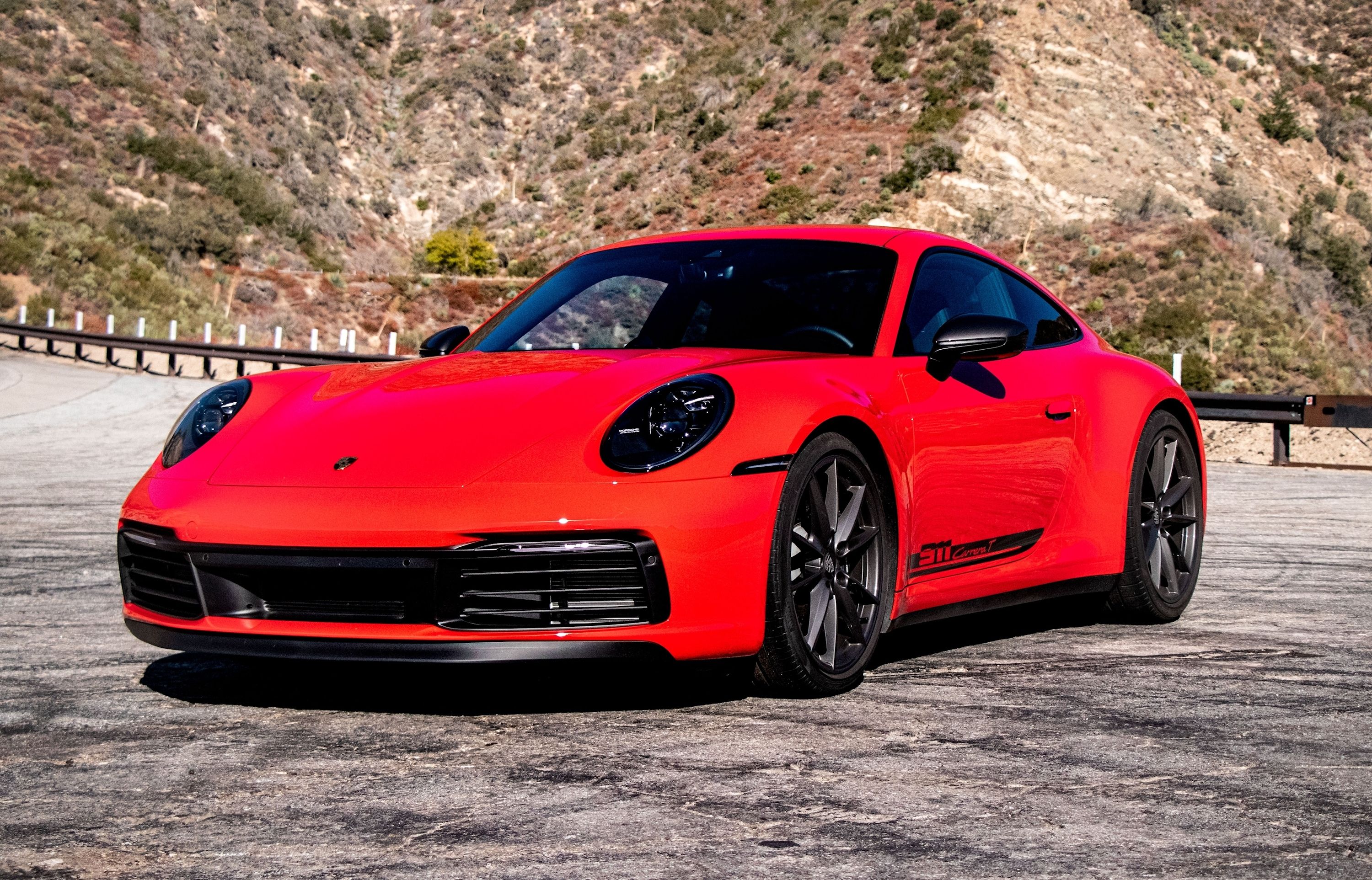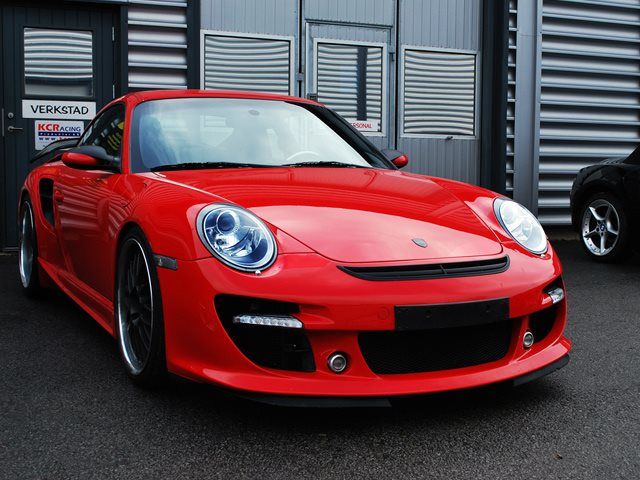
Introduced in 2004 as a 2005 model, the first thing that needs to be said about the Type 997 is that Porsche worked out the headlight situation. This is perhaps significant, because although the mechanical changes from the 996 to the 997 were many, it can sometimes be difficult to tell that much has changed at all just from looking at the cars. The replacement for the 997 has already been unveiled, but the older car hasn't yet been completely replaced. As is generally the case with Porsche, it's much more complicated than that.
The look of the car is, again, mostly the same as the 996, with the major exception being the headlights. The back of the car is now 3.5 inches wider, although there were enough widebody variants of the 996 that this might not be immediately obvious. What is obvious is how much the interior has been changed. Porsche wasn't in a huge rush to address complaints about the 996's interior, but when the time came for a redesign anyway, they gave the new car a more classic 911 type of interior. Nearly every part of the interior is different, including all of the controls.
The 911 lineup has become a massive and confusing maze of products, with more than 20 different models now being offered, but the engines aren't actually too complicated. The base models of the Carrera, Carrera 4 and Targa all have 3.6-liter engines. These are largely carried over from the 996, but with the addition of direct injection, and now producing 321 horsepower. The S versions of these cars get 3.8-liter engines which produce 355 horsepower, with the option to upgrade to 376hp. GT3, GT3 RS and all Turbocharged models have 3.6-liter dry-sump engines, which produce between 409 horsepower in the GT3 and 612hp in the GT RS.
Lastly, there is the GT3 RS 4.0, in which the enlarged engine produces 493 horsepower. Just wait for the full lineup of the Type 991 to be unveiled, you can bet this will only get more complicated. The Turbo model followed the Carrera more closely with the 997 than it had in previous generations, being made available just one year after the N/A model. The engine was still largely based on the one from the 964, albeit modified to be water-cooled. The twin-turbo setup on the 997 Turbo uses a pair of BorgWarner Variable Turbine Geometry turbochargers. These turbos can change the angle of the vanes in order to reduce lag and prevent excessive back pressure.
This made for even smother application of power than even 996's sequential system. The 997 Turbo was even faster than the Porsche Carrera GT, a V10-powered supercar released just two years prior, which was still in production. Also significant for the 997 was the new PDK dual-clutch transmission, a highly sophisticated gearbox which shaves seconds off of every shift, a useful tool for going fast. A total of 5 different lightweight GT models were made of the 997. These included the "regular" GT3 and GT2 as well as RS versions of both of these.
The GT2 became the first Porsche to come equipped with launch control, which has now spread to other models. Turbo S and faster 911 models with launch control have been clocked hitting 60mph in under 3 seconds. In addition to the already lightweight GT3 RS, there is a track-only version known as the GT3 RSR, although the GT3 RS is already essentially ready for the track complete with a factory-installed roll cage. The GT3 RS 4.0 is the last iteration of the Type 997 911. Several special models of the 997 were made, which were mechanically the same as other models, but which were nonetheless called special editions.
The first of these came out almost immediately upon the unveiling of the 997. This was the 911 Club Coupe, a special run of 50 cars to commemorate the 50th anniversary of the Porsche Club of America. This is essentially a Carrera S with several options offered as standard and with a special bespoke paint color and badging. The price for this special equipment came to some $9,000 over the standard price, but this actually constituted a savings versus optioning up to the level of equipment the car came with.
In 2010 Porsche came out with the 911 Sport Classic, which was another Carrera S built according to a similar philosophy as the Club Coupe. It had a special color, interior touches and offered a special equipment package. 250 of these were built, and they will also likely be valuable as collector's items. Lastly there was the speedster. This was based on the Carrera GTS, a new trim level introduced to the already-confusing lineup in order to slot something between the Carrera S and the GT3, and has no special equipment. The body, however, is special, and was designed to invoke the old 356 convertible models of the Fifties. Two special colors were offered.
The 997 is in the process of being replaced by the Type 991 911. The new Carrera is already out, complete with is all-new seven-speed manual transmission. Turbo and GT3 probably won't hit dealerships until next year at the earliest but you can rest assured that there will be a hugely confusing model lineup in just a couple years. The 911 has come a long way, and few cars have ever been quite so meticulously engineered. Porsche has spent decades working to get every detail just right. With the 997 being the best-selling generation of the 911 ever, it seems like 911 is still very much headed in the right direction.

